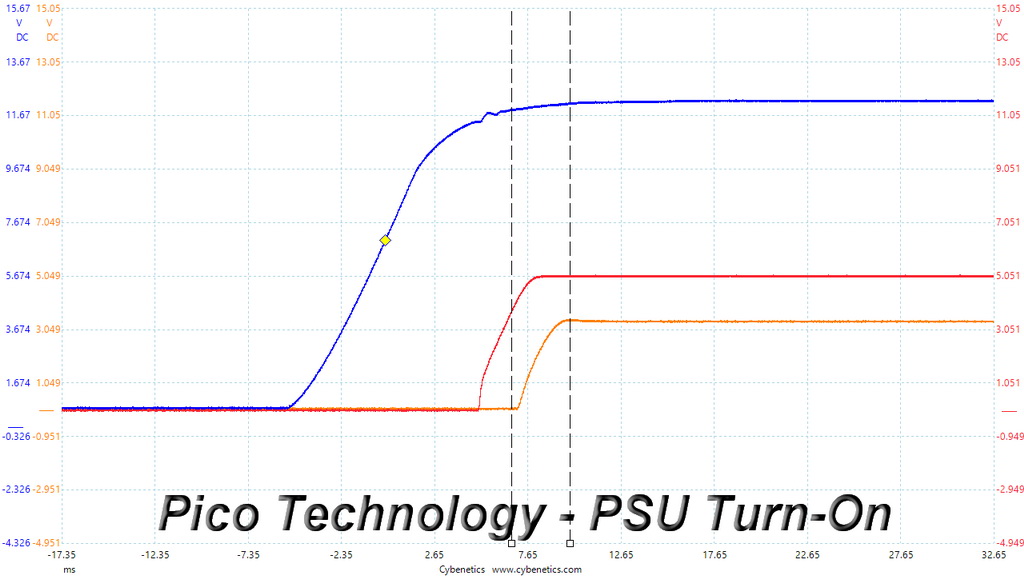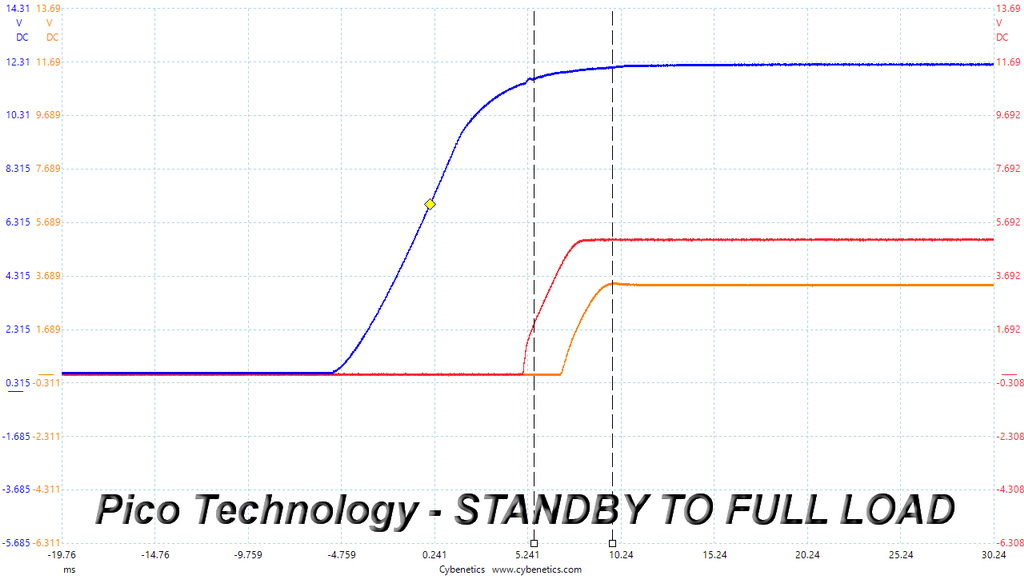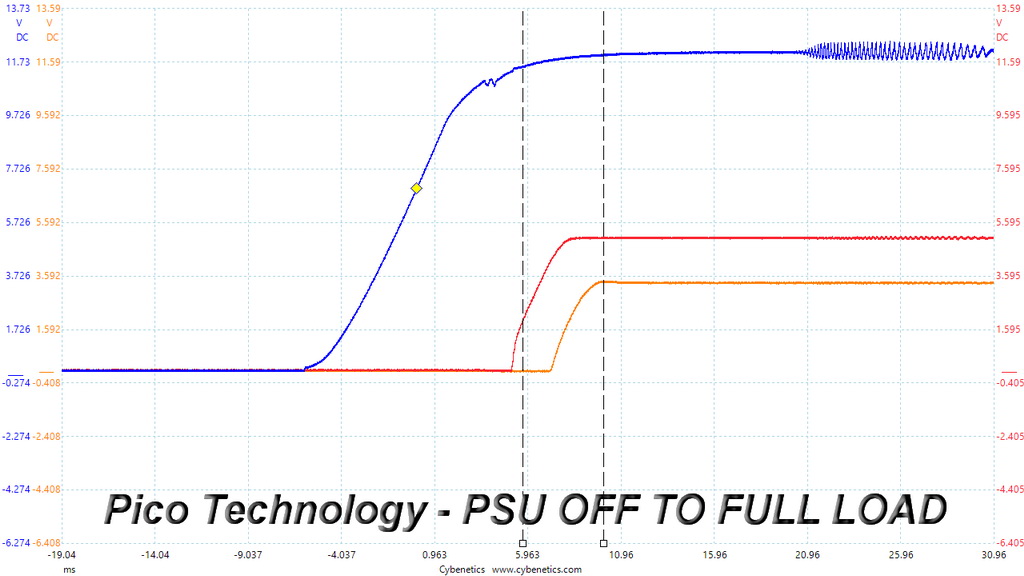Corsair SF600 Platinum PSU Review: Setting The SFX Performance Bar Higher
Why you can trust Tom's Hardware
Protection Features & DC Power Sequencing
Protection Features
Check out our PSUs 101 article to learn more about PSU protection features. Our protection features evaluation methodology is described in detail here.
| Protection Features | |
|---|---|
| OCP | 12V: 67.6A (135.2%), 11.998V 5V: 27.5A (137.5%), 5.025V 3.3V: 29.1A (145.5%), 3.312V 5VSB: 3.5A (140%), 4.956V |
| OPP | 809.49W (134.92%) |
| OTP | ✓ (145°C @ secondary side) |
| SCP | 12V: ✓ 5V: ✓ 3.3V: ✓ 5VSB: ✓ -12V: ✓ |
| PWR_OK | Accurate, but lower than 16ms |
| NLO | ✓ |
| SIP | Surge: MOV Inrush: NTC thermistor & bypass relay |
OCP levels on the +12V, 5V, and 5VSB rails are set properly. The triggering point at 3.3V is a bit higher than we would like to see. Still, the rail's voltage stays close to nominal and ripple remains well-controlled.
Over-power protection is configured correctly. Short circuit protection is present on every rail, just as we'd expect from a modern PSU. Finally, the power-good signal is accurate, though lower than the ATX spec's 16ms requirement.
Surge protection is handled by an MOV and an NTC thermistor, along with a bypass relay that safeguards against large inrush currents.
DC Power Sequencing
According to Intel’s most recent Power Supply Design Guide (revision 1.4), the +12V and 5V voltages must be equal to or greater than the 3.3V rail’s output at all times.
For our first measurement, we turn the PSU off and switch it back on without load on any of its rails. In the second test, we set the PSU to standby mode, dial in a full load, and start the PSU. In the last test, with the PSU switched off, we dial in a full load before restoring power.
Get Tom's Hardware's best news and in-depth reviews, straight to your inbox.



The 3.3V rail behaves well; its voltage remains lower than the 5V and +12V rails in all of our tests. We did, however, notice a turn-on voltage overshoot on the +12V rail during the last test. This doesn't affect DC power sequencing, but it still shouldn't happen.
MORE: Best Power Supplies
MORE: How We Test Power Supplies
MORE: All Power Supply Content
Current page: Protection Features & DC Power Sequencing
Prev Page Efficiency, Temperature & Noise Next Page Cross-Load Tests & Infrared Images
Aris Mpitziopoulos is a contributing editor at Tom's Hardware, covering PSUs.
-
Co BIY Less than 1% efficiency difference between Gold and Platinum ? Hard to make that pay under any normal use scenario.Reply
Glad to see that they made several other improvements for the Platinum model. -
iankphone I just completed my ncase-m1 build with this. It's really good.Reply
8700K, 2080Ti. Like a boss. I'm not overclocking however (insufficient cooling for that). -
Dark Lord of Tech Reply21685936 said:Just wait now for the SF750 to get reviewed :)
Looking forward to it. I will most likely get one for my next setup. -
smitty2k1 Did you test the SF600 platinum with Vega graphics cards? I'm getting the OCP to trip on my just running the Vega 56 in turbo mode. The same thing was happening with my older Silverstone SX-650G power supply, and Silverstone confirmed that they had made an engineering change to fix the OCP tripping.Reply
It only happens in Destiny 2, no other games. I'm curious if this is a widespread issue, or something else with my system. It seems the Vega cards are tough on PSUs.